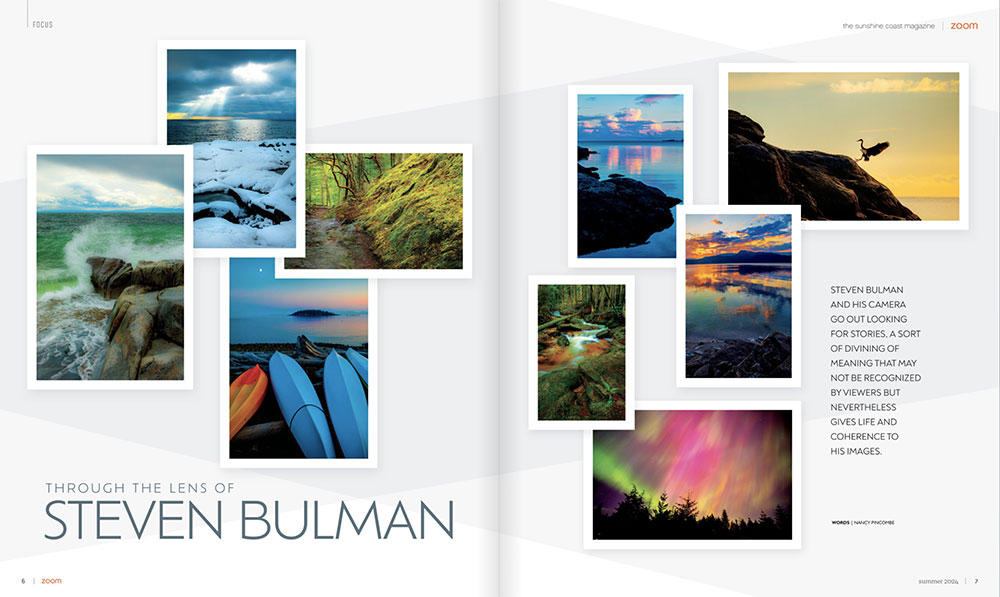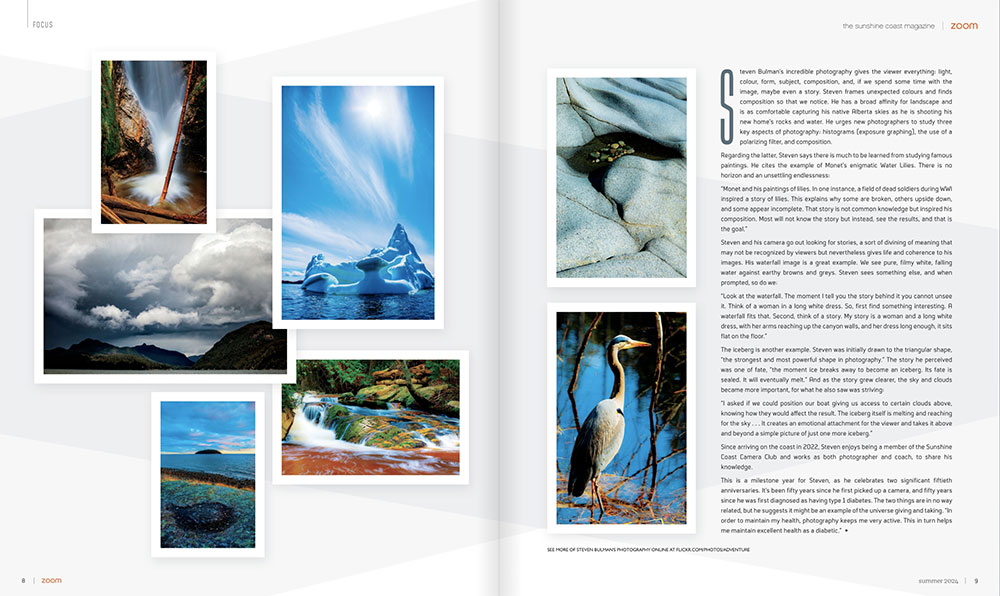Steven Bulman’s incredible photography gives the viewer everything: light, colour, form, subject, composition, and, if we spend some time with the image, maybe even a story. Steven frames unexpected colours and finds composition so that we notice. He has a broad affinity for landscape and is as comfortable capturing his native Alberta skies as he is shooting his new home’s rocks and water. He urges new photographers to study three key aspects of photography: histograms (exposure graphing), the use of a polarizing filter, and composition.
Regarding the latter, Steven says there is much to be learned from studying famous paintings. He cites the example of Monet’s enigmatic Water Lilies. There is no horizon and an unsettling endlessness:
“Monet and his paintings of lilies. In one instance, a field of dead soldiers during WWI inspired a story of lilies. This explains why some are broken, others upside down, and some appear incomplete. That story is not common knowledge but inspired his composition. Most will not know the story but instead, see the results, and that is the goal.”

Steven and his camera go out looking for stories, a sort of divining of meaning that may not be recognized by viewers but nevertheless gives life and coherence to his images. His waterfall image is a great example. We see pure, filmy white, falling water against earthy browns and greys. Steven sees something else, and when prompted, so do we:
“Look at the waterfall. The moment I tell you the story behind it you cannot unsee it. Think of a woman in a long white dress. So, first find something interesting. A waterfall fits that. Second, think of a story. My story is a woman and a long white dress, with her arms reaching up the canyon walls, and her dress long enough, it sits flat on the floor.”

The iceberg is another example. Steven was initially drawn to the triangular shape, “the strongest and most powerful shape in photography.” The story he perceived was one of fate, “the moment ice breaks away to become an iceberg. Its fate is sealed. It will eventually melt.” And as the story grew clearer, the sky and clouds became more important, for what he also saw was striving:
“I asked if we could position our boat giving us access to certain clouds above, knowing how they would affect the result. The iceberg itself is melting and reaching for the sky . . . It creates an emotional attachment for the viewer and takes it above and beyond a simple picture of just one more iceberg.”
Since arriving on the coast in 2022, Steven enjoys being a member of the Sunshine Coast Camera Club and works as both photographer and coach, to share his knowledge.
This is a milestone year for Steven, as he celebrates two significant fiftieth anniversaries. It’s been fifty years since he first picked up a camera, and fifty years since he was first diagnosed as having type 1 diabetes. The two things are in no way related, but he suggests it might be an example of the universe giving and taking. “In order to maintain my health, photography keeps me very active. This in turn helps me maintain excellent health as a diabetic.”






